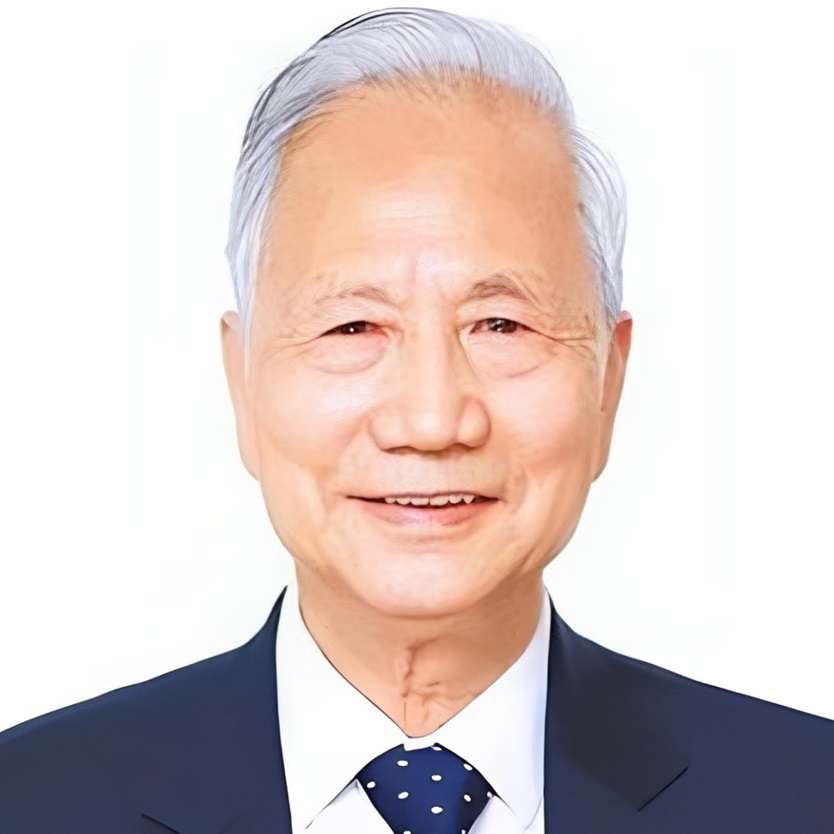AAIA Aim
AAIA aims to build a broad AI industry to promote the development and application of AI in different fields of science and technology. AAIA gathers top scientists in different disciplines that can be combined with AI, AI related institutions, and entrepreneurs that have AI applications to drive innovation, development and application of AI. AAIA is an interdisciplinary organization of AI industries, such as AI computing industries, AI communication industries, AI power industries, AI biology industries, AI medical industries, AI transportation industries, AI logistics industries, AI agricultural industries, AI ocean industries, AI transportation industries, AI chemistry industries, AI finance industries, AI meteorology industries, AI education industries, dozens of AI industries.
The main mission of AAIA is to enhance the development and application of artificial intelligence by scientists in the field of artificial intelligence and other fields around the world through academic research, academic exchanges, science education, science exhibitions, academic conferences, academic publications, summer/winter camps and other activities.
AAIA Regulation
AAIA Regulation
I. Name
The name of the organization shall be the Asia-Pacific Artificial Intelligence Association (AAIA).
II. Purpose
The Association is an academic, non-profit public welfare organization and is not in anyone's private interest. The Association was created to promote scientific and technological progress and education in the field of artificial intelligence, and to advance research and ethics in artificial intelligence technology.
III. Members
1. Classes
The Association consists of three classes of members: fellows; senior members; members.
2. Eligibility
Membership is open to any individual, enterprise, and organizational entity who agrees with the mission statement of this association and is willing to contribute to this association. The application for membership submitted by the applicant is discussed and approved by the Executive Board.
3. Membership
After the Association has passed the eligibility application and paid the membership fee, a person can become a member.
4. Voting right
Each regular member in good standing from the date of recording shall be entitled to one vote on any vote of the membership.
5. Hold harmless clause
AAIA members are responsible for the consequences of their own actions, including the research they conduct or chose to share. AAIA does not take credit or responsibility for any research conducted or shared by its members. The views or opinions of the individual presenters/authors do not reflect those of AAIA.
6. Dues
1)The Executive Board determines the dues and the method and time of payment, and failure to make timely payment will result in automatic termination of membership.
2) In exceptional circumstances, the Executive Board could decide to postpone or delay the payment of dues in whole or in part.
7. Termination of membership
By an affirmative vote of two-thirds of all members of the Executive Board, a member may be suspended or expelled for cause after an appropriate hearing. Such a hearing may be held only after prior written notice of the suspension or expulsion of the member, stating the reasons therefor, and after providing a timely opportunity for a hearing on the matter as provided by-law.
8. Resignation
Any member may resign by submitting a written resignation. Resignation does not relieve any responsibility of any resigning member to the Association, nor does it diminish any right of the Association to fulfill those responsibilities.
9. Reinstatement
When a former member is terminated for cause and submits a written request to the Secretary-Treasurer, the Standing Board may decide by majority vote to reinstate the member.
10. Transfer of membership
Membership of the Association, or any rights arising therefrom, cannot be transferred or transferred.
11. Liability
No member of the Association shall be personally liable for any debts, obligations or liabilities of the Association, and all creditors of the Association may rely solely on the assets of the Association to repay the debts.
IV. Officers
1. Organizational structure
The organizational structure of AAIA includes, Presidents; Vice-Presidents; AAIA Service Offices; Executive Board; Publishing; Media and Publicity; International Communication and Cooperation.
1)The general meeting of members shall be held for five years, and if it is necessary to change the membership earlier or later due to special circumstances, the maximum extension shall not exceed 1 year.
2)The Executive Board is the executive body shall lead the Association in its daily work.
2. Executive Board
1)The Executive Board has the following authority:
(a)To implement the resolutions.
(b)To recommend the President, Vice- Presidents, Secretary-General.
(c)To prepare for the convening of the general meeting of the members
(d)Report to the General Assembly on its work and financial status
(e)Deciding on the admission and removal of members
(f)Deciding on the establishment, change and termination of offices, branches, representative bodies and entities
(g) Leading the work of the institutions of the Association
(h)Formulating the internal management system
(i)Deciding on the establishment and selection of honorary posts
(j)Deciding other important matters.
2) The Executive Board is the governing body of the Association and consists of the president, vice-presidents and general secretary.
3)The number of directors elected by the voting members and the number of directors elected by the General Meeting shall not be less than nine and shall not exceed fifty.
4)All directors shall be at least 18 years old and shall be regular members of the Association.
5)The Executive Board shall be convened only when more than 2/3 of the directors are present, and its resolution shall be passed by more than 2/3 of the directors present in order to take effect.
6)The Executive Board shall meet at least once a year; in special cases, it may be held by correspondence.
7)The AI Industry Committees shall meet at least once every year; under special circumstances, it may be held in the form of communication.
8)The President of the Association shall exercise the following powers.
(a)To convene and preside over meetings of the Executive Board, any other meetings attended by the President as may be provided for in the Articles of Association.
(b)To check the implementation of the resolutions of the Executive Board.
9)The President, Vice Presidents of the Association shall serve for a term of one year.
3. Secretariat
1)The Secretary shall be a Secretary-General and such number of clerical staff as the Organization may require.
2) The staff shall be appointed by the Secretary-General in accordance with the statutes established by the General Meeting.
3)The highest standards of efficiency, competence and integrity shall be the paramount consideration in the employment of the staff and in the determination of their conditions of service. In the recruitment of staff, due regard shall be paid to geographical universality to the extent possible.
4)The Secretary General of the Association shall exercise the following powers:
(a)To preside over the daily work of the office and organize the implementation of the annual work plan;
(b)To coordinate the work of the branches, representatives and entities;
(c)Nominate the deputy secretary-general and the main persons in charge of each branch, representative body and entity, and submit them to the Executive Board for examination and decision;
(d)Deciding on the employment of full-time staff of offices, representative bodies and entity agencies;
(e)Handling other daily affairs.
4. Executive Committees
1)In order to improve the efficiency and quality of decision-making, the Executive Committee is set up in the Executive Board to conduct in-depth research on important issues of the Association before the Executive Board is convened and to propose a plan for voting by the Executive Board. The Executive Committee is responsible to the Executive Board. The Executive Committee consists of five members, including Secretary General, Director of Development and Management Committee, Director Academic Affairs Committee, and Director Technology Committee, Director of Supporting Team Committee. The Executive Committee members are elected from the AAIA Executive Board. The term for an Executive Committee member is one year, and each committee member can run for one consecutive term.
2)Development and Management Committee (DMC)
The goal of DMC is to establish a strategic development plan for recruiting members and expanding AAIA's academic presence by considering AAIA's mission, membership distribution, and academic characteristics. The DMC Director is responsible for organizing and learning from the DMC to carry out the following activities:
(a)Develop a strategic plan for membership recruitment;
(b)Create AAIA newsletter and update AAIA handbook;
(c)The DMC Director shall attend quarterly Executive Committee meetings, report on the work of the committee, and keep a log of activities and information to be presented to the next DMC Director;
3)Academic Affairs Committee (AAC)
AAC is responsible for the academic and scholarly activities of AAIA. The Director of the AAC is responsible for organizing and leading the AAC in the following activities:
(a)Conduct research webinars, web forums, and/or workshops;
(b)Organizing scholarly communication activities;
(c)Assist the AAIA meeting chairs in distributing proposals and reviewing meeting documents;
(d)AAC Directors shall attend quarterly Executive Board meetings, report on the work of the committee, and keep a log of activities and information to be presented to the next AAC Director.
4)Technical Committee (TC)
TC is responsible for designing and maintaining the front-end and back-end of the AAIA website. The Director of TC is responsible for organizing and leading B in the following activities:
(a)Maintain the AAIA website domain name and email accounts;
(b)Managing AAIA member accounts;
(c)Updating web page information on AAIA activities and providing technical support to the task forces as needed;
(d)Sending system-generated emails to AAIA members to remind them to pay their dues;
(e)Archive AAIA documents, including bylaws, meeting minutes, newsletters, and brochures;
(f)Recommend emerging technologies or tools that facilitate communication and/or social networking among members. The B Director shall attend quarterly Executive Committee meetings, report on the work of the committee, and maintain a log of activities and information to be submitted to the next B Director.
5)Supporting Team Committee
Supporting Team Committee is responsible for service work of the Association, and cooperate with other committees to complete activities.
V. Principles of asset management and use
1. Contract
The Executive Board may authorize any officer, agent or attorney of the Association to enter into any contract or to execute and deliver any instrument in the name of or on behalf of the Association, and such authority may be general or limited to specific circumstances. Any authority so delegated is subject to the provisions of law relating to the Executive Board and to the Constitution of the Association and its by-laws.
2. Checks, money orders or payment orders
All checks, drafts or orders for the payment of money, notes or other evidences of indebtedness issued in the name of the Association shall be signed by an officer whose signature is determined by resolution of the Executive Board. In the absence of such determination by the Executive Board, such instruments shall be signed by the Financial Secretary or the President of the Association, unless otherwise provided by-law.
3. Deposits
All funds of the Association shall be deposited from time to time in banks, trust companies or other trustees selected by the Executive Board.
4. Donation
The Standing Executive Board may, on behalf of the Association, accept any contribution, gift or bequest made for the general purpose of the Association or for any special purpose.
5. Member
Within the scope of the articles of association, the members of our association can receive certain remuneration according to their participation in the work of AAIA. Specific remuneration depends on the arrangement of specific activities.
VI. The procedure for amending the constitution
1. Modification by Executive Board
The Executive Board may adopt, amend or repeal bylaws unless the action would have a material and adverse effect on the voting rights of the members. The Executive Board may not extend the term of office of a member beyond the term of the member.
2. Modification by General Assembly of members
Amendments to the main contents of the by-laws must be approved by resolution of the general meeting of members.
VII. Termination procedures and disposition of property upon termination
1. Termination procedures
1)If the Association completes its purpose or dissolves itself or needs to be cancelled due to separation or merger, a motion to terminate shall be made by the Executive Board.
2)The motion to terminate the Association shall be voted by the general meeting of members.
2. Property disposal
1)Before the termination of the Association, a liquidation organization shall be established under the guidance of the Board of Directors and the supervision of the representatives of the members to clear the debts and liabilities and deal with the aftermath. During the liquidation period, no activities other than liquidation shall be carried out.
2) The remaining property after the termination of this Executive Board will be used for the development of undertakings related to the purposes of this Executive Board.
VIII. By-laws
1. Provisional appointment
The Association is initially established, the Executive Board or the President of the Association are provisionally confirmed by invitation, and when the term of office expires and the work of the Association is running properly, a formal election procedure will be held.
 Asia-Pacific Artificial
Asia-Pacific Artificial Asia-Pacific Artificial
Asia-Pacific Artificial










 Asia-Pacific Artificial
Asia-Pacific Artificial